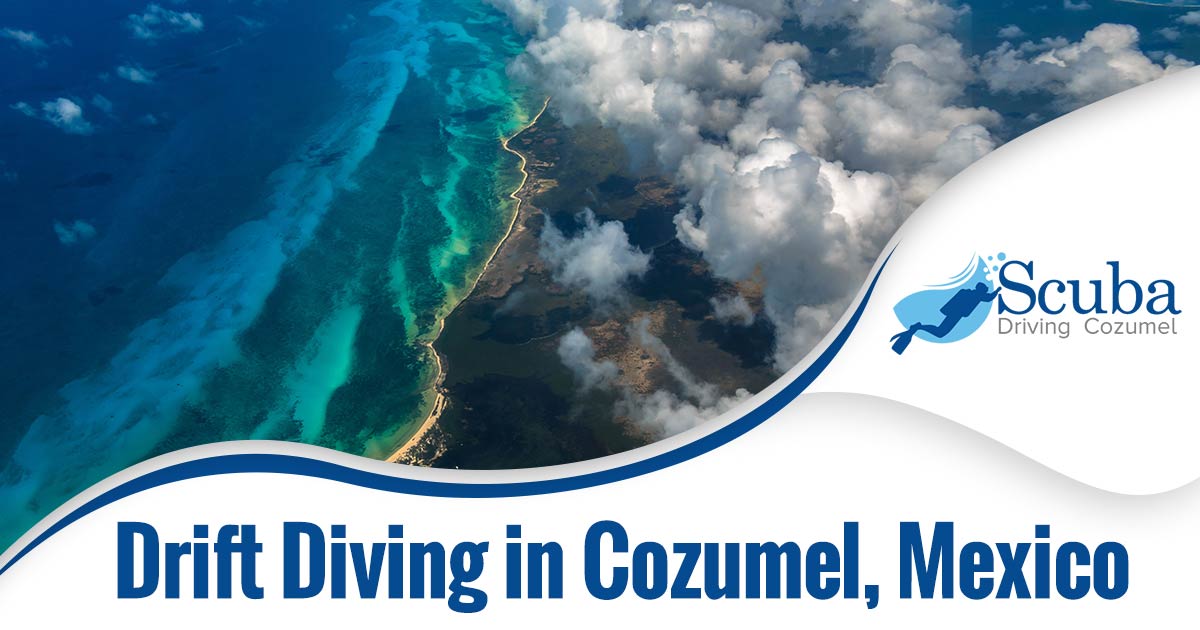Cozumel is one of the most breathtaking places to go scuba diving. The reefs are lush and virtually untouched, and this is due to the healthy current here. If you’re planning to visit Cozumel for scuba diving, it’s wise to think about drift diving. Drift diving utilizes the current by carrying you. This allows you to explore a wider area and conserve energy.
If you’ve never been drift diving before, it may sound dangerous or intimidating. But you’ll soon realize it’s the easiest (and the safest) way to dive! Take a look at some of these tips to make your diving experience even better:
Buoyancy Matters
Your buoyancy is one of the most important things to work on while you’re drift diving. You want to be able to swim in a straight, controlled line to your destination. Once you’re there, you will want to be able to easily stop yourself when gazing upon the coral. If you’re careful about your floating, you should be able to avoid adding a ton of air to your tank, too. Fine-tuning this skill will conserve air and energy.
Master Your Body Positions
Swimming in a horizontal form is ideal for drift diving. If you’re correctly spread out, you should be able to get close to the reefs without smashing into them. This is the position that offers maximum control, so it’s important to practice.
A good diving position also means you’ll be equipped to handle turns (left and right) and altitude (up and down). It should be fairly simple for you to move your fins and land in the area you want. Be careful when you’re working with your tank – too much air will put you in a vertical position. Too little air will mean a loss of control. Start by experimenting with small changes in your tank, and don’t forget to hold your horizontal position.
Don’t Get Caught
If you’re diving with any kind of cage or console, watch the floor. If anything is dragging, you could get stuck or left behind. You want to be free to roam, so make sure you tuck those odds and ends in with you. Whatever you do, don’t let them drag on the floor – especially when you’re on the move. If you’re dragging anything under you, there’s also a it will get caught on some coral or rocks. For most people, this is a major inconvenience. For others, it could mean air loss. To keep your gear (and your body) intact, don’t let anything touch the bottom unless you’re stationary.
Be Considerate
If you’re diving with a group of people, consideration is huge. Drift dives always work better when everyone descends together and works together. If you wait too long to descend, your team might have to go on without you. This will slow everyone down. Make sure you’re alert and ready. You should have all of your gear on and you should be in a position to quickly jump and keep up with the rest of your group. When you get under the water, do a few kicks to get ahead of the person behind you. This will help you avoid accidents and it will keep everything moving smoothly.
Safety First
When you’re out in the water, it’s important to stay close to your guide. He/she will get you safely where you need to go. It also goes along with consideration – something else we’ve discussed in this article. Your guide will be able to help you with any trouble, and he/she will be watching you to make sure you’re following the rules and sticking with your group.
Getting separated from your guide can happen. If it does, it’s crucial that you have your own surface marker buoy so you can alert the crew above the water that you’re lost. Make sure you buy one that is bright and hard to miss. Carry it with you for every dive.
Pick Your Place in Line Ahead of Time
Before you head out with your group, ask yourself where you want to be in the line. Would you rather be towards the front or the back? Both positions have their advantages.
Sometimes, if you’re up in the front, you’ll be the first to catch the view of unique marine life. You might see something others won’t see because it might swim away out of fear. When you’re in the front, you often also have the advantage of being close to your guide. This is great if you’re a beginner and you need extra guidance.
Picking the back of the line has its advantages, as well. The fish, for example, may circle to the back of the link if they were spooked by the front of it. You can also take your time a bit more back there.
Whatever position you pick, try to choose either the front or the back. If you get stuck in the middle, you might miss out.
Tune-in To the Water’s Movements
Because you are swimming with the current, it can be difficult to find a place to rest and explore. If you can predict the water’s movements, you’ll be able to find an area where the current isn’t as strong. Remember that the more you swim against the current, the more air you’re going to lose. Conserve your energy and your air by working with the current and anticipating what it’s going to do next. If you need to get somewhere, try making a down-current movement for your desired area, and don’t kick too hard.
Watch Your Ascension
Before you start to ascend, listen carefully for boat traffic or other divers. Take note of your space and make sure there is nothing blocking your path. And most importantly, ascend slowly. Ascending too quickly can make you sick, and you’re not in a rush. Add a little air to your tank, settle back, and wait for your boat.
Feel free to contact us at Scuba-Diving-Cozumel.com for questions and tips (214-206-0577)!


